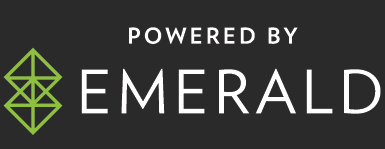By Stephen Cutbill, SVP Europe, Yieldmo
Curation this. Curation that. Everyone is so focused on curation packages that they’re missing the core issue: this isn’t a new concept. Its resurgence, however, has prompted a closer examination of its implications for stakeholders. Today, Curation 2.0 has evolved to take many forms, each presenting unique challenges and opportunities.
It’s a new name to solve a similar problem that’s plagued my peers. Ultimately, we want to ensure that each ad impression is meaningful and reaches its intended audience at a time and place where it will have the most significant impact.
Historically, curation in advertising has encompassed the strategic alignment of inventory to data-driven insights, key performance indicators (KPIs), and more recently, attention signals. This approach has enabled agencies to optimize media spending, ensuring that every dollar invested is effectively utilized.
The issue is that this new form of curation platform has introduced unintended layers of complexity. These platforms aggregate inventory from multiple exchanges, applying proprietary algorithms to create private marketplace (PMP) deals. While this model offers certain advantages, such as streamlined access to inventory, it also raises critical concerns regarding transparency, fees, and overall efficiency.
The question advertisers must ask themselves: “How do I get there?”.
Fragmentation, Super-Charged
A significant critique of the modern curation platform model is its resemblance to traditional ad networks, albeit under a new guise. These platforms often involve multiple intermediaries, each taking a cut of the transaction, ultimately diminishing the value delivered to the publisher. This model can be counterproductive for agencies and brands prioritizing supply path optimization (SPO) and cost efficiency.
By contrast, a more purist approach to curation emphasizes direct relationships with publishers. Doing this eliminates unnecessary intermediaries, ensuring that a larger share of the media spend reaches the intended destination. Curating through an exchange can provide a more direct approach, equipped with rich, proprietary data points associated with each impression and ad slots with years of data on top – this is an ideal way forward. And when executed, agencies can track their spending, monitor the performance of specific publishers, and create deal IDs tailored to their unique needs.
Less Mystery, More Checks And Balances
Transparency remains a chief concern for agencies dealing with curation. The ability to see where money is being spent, which publishers are involved, and how inventory is being sourced is crucial. With their opaque operations, traditional curation platforms often need to provide more.
The industry’s ongoing struggles with fraud and transparency underscore the need for solutions that help solve these issues, not contribute to them. The notion of “grading one’s own homework” regarding inventory verification is fraught with challenges. A transparent curation model that leverages independent verification mechanisms can mitigate these risks, ensuring that agencies receive accurate and reliable data.
Performance, Sustainability, and Media Waste
Another dimension of the curation debate is sustainability. The rise of curation platforms can lead to media waste as inventory fragmentation grows across multiple channels. This inefficiency not only impacts financial outcomes but also has environmental implications. A streamlined curation process, facilitated by a true exchange, minimizes waste and promotes more sustainable advertising practices.
As the interest and need for curation grows, it’s essential to strike a balance between innovation and practicality. Agencies must critically assess the models they adopt, prioritizing transparency, efficiency, and directness. While the draw of curation platforms is undeniable, their long-term viability hinges on their ability to deliver tangible value without compromising these core principles.
Advancements in artificial intelligence and machine learning are expected to enhance the precision and effectiveness of curation strategies. A growing emphasis on data privacy and the decline of third-party cookies are also likely to drive the adoption of curation to achieve targeted advertising in a compliant manner.
By embracing a purist approach to curation, agencies can optimize their media spending, foster trust with their partners, and ultimately drive better client outcomes.








